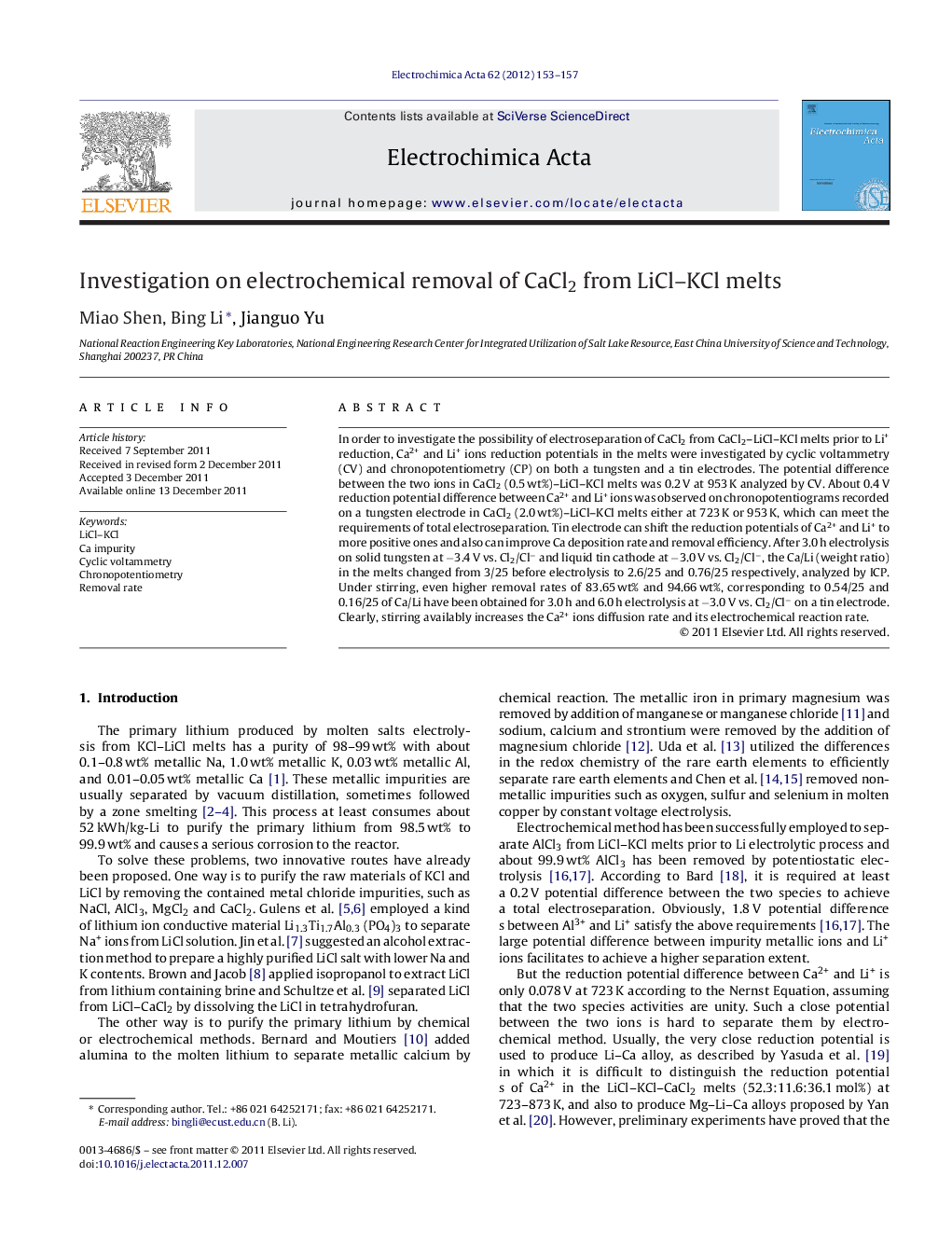| Article ID | Journal | Published Year | Pages | File Type |
|---|---|---|---|---|
| 189037 | Electrochimica Acta | 2012 | 5 Pages |
In order to investigate the possibility of electroseparation of CaCl2 from CaCl2–LiCl–KCl melts prior to Li+ reduction, Ca2+ and Li+ ions reduction potentials in the melts were investigated by cyclic voltammetry (CV) and chronopotentiometry (CP) on both a tungsten and a tin electrodes. The potential difference between the two ions in CaCl2 (0.5 wt%)–LiCl–KCl melts was 0.2 V at 953 K analyzed by CV. About 0.4 V reduction potential difference between Ca2+ and Li+ ions was observed on chronopotentiograms recorded on a tungsten electrode in CaCl2 (2.0 wt%)–LiCl–KCl melts either at 723 K or 953 K, which can meet the requirements of total electroseparation. Tin electrode can shift the reduction potentials of Ca2+ and Li+ to more positive ones and also can improve Ca deposition rate and removal efficiency. After 3.0 h electrolysis on solid tungsten at −3.4 V vs. Cl2/Cl− and liquid tin cathode at −3.0 V vs. Cl2/Cl−, the Ca/Li (weight ratio) in the melts changed from 3/25 before electrolysis to 2.6/25 and 0.76/25 respectively, analyzed by ICP. Under stirring, even higher removal rates of 83.65 wt% and 94.66 wt%, corresponding to 0.54/25 and 0.16/25 of Ca/Li have been obtained for 3.0 h and 6.0 h electrolysis at −3.0 V vs. Cl2/Cl− on a tin electrode. Clearly, stirring availably increases the Ca2+ ions diffusion rate and its electrochemical reaction rate.
► The potential difference between Ca2+ and Li+ ions in CaCl2–LiCl–KCl melts can meet the requirements of total electroseparation. ► Tin electrode can shift the reduction potentials of Ca2+ and Li+ to more positive ones and also can improve Ca deposition rate and removal efficiency. ► Stirring availably increases the Ca2+ ions diffusion rate and its electrochemical reaction rate.
